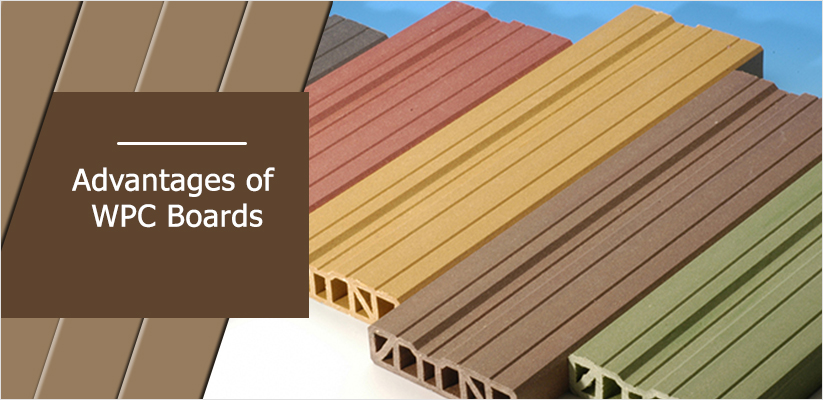Frequently Asked Questions:
Q1. What is a WPC sheet?
A. Wood-plastic composites (WPCs) are composite materials made of wood fiber/wood flour and thermoplastic(s) such as polyethylene (PE), polypropylene (PP), polyvinyl chloride (PVC), or polylactic acid (PLA). In addition to wood fiber and plastic, WPCs can also contain other lignocellulosic and/or inorganic filler materials. Its composition is 70% virgin polymer, 15% additive chemical, and 15% wood powder. These boards are widely used in the construction sector for their high strength and durability
Q2. Which is better PVC or WPC?
A. WPC has more versatility in terms of density as compared to PVC. PVC is a costlier option as compared to WPC. WPC has more strength as compared to PVC. WPC is an extremely carpenter-friendly material whereas.
Q3. Is the WPC sheet waterproof?
A. Advance Panels WPC sheet is 100% termite proof, waterproof, borer proof, fire-retardant, high-screw & nail-holding capacity.
Advantages of WPC Boards:
1. Termite resistance: WPC boards make good material for termite-proof furniture. This is one of the main advantages WPC wood offers over natural wood. In addition, these boards make a perfect solution for outdoor applications.
2. Moisture resistance: Unlike conventional building materials, WPC woods are resistant to moisture. They make great material for kitchen and bathroom cabinets where the chances of moisture retention are high.
3. UV rays resistant: WPC boards come in multiple colors. In general, the color of the furniture kept outside fades in heat. WPC boards offer UV rays resistance, making them suitable for exterior applications.
They are widely used in making facades, landscape items, flowerpots, and garden furniture.
4. High durability: Durability is one of the essential benefits offered by WPC boards. They are not affected by rain, chemicals, humidity, and other environmental conditions. They are also easy to use. Conventional tools can be used to fix these boards wherever required.
5. Eco-friendly: WPC wood is biodegradable. It can be 100 percent recyclable with recyclable materials such as wood, agricultural, and plastic waste used in its production.
Also, there is minimal waste generation in the manufacturing process. WPC woods are also reusable, and most of them are available with a buyback guarantee.


